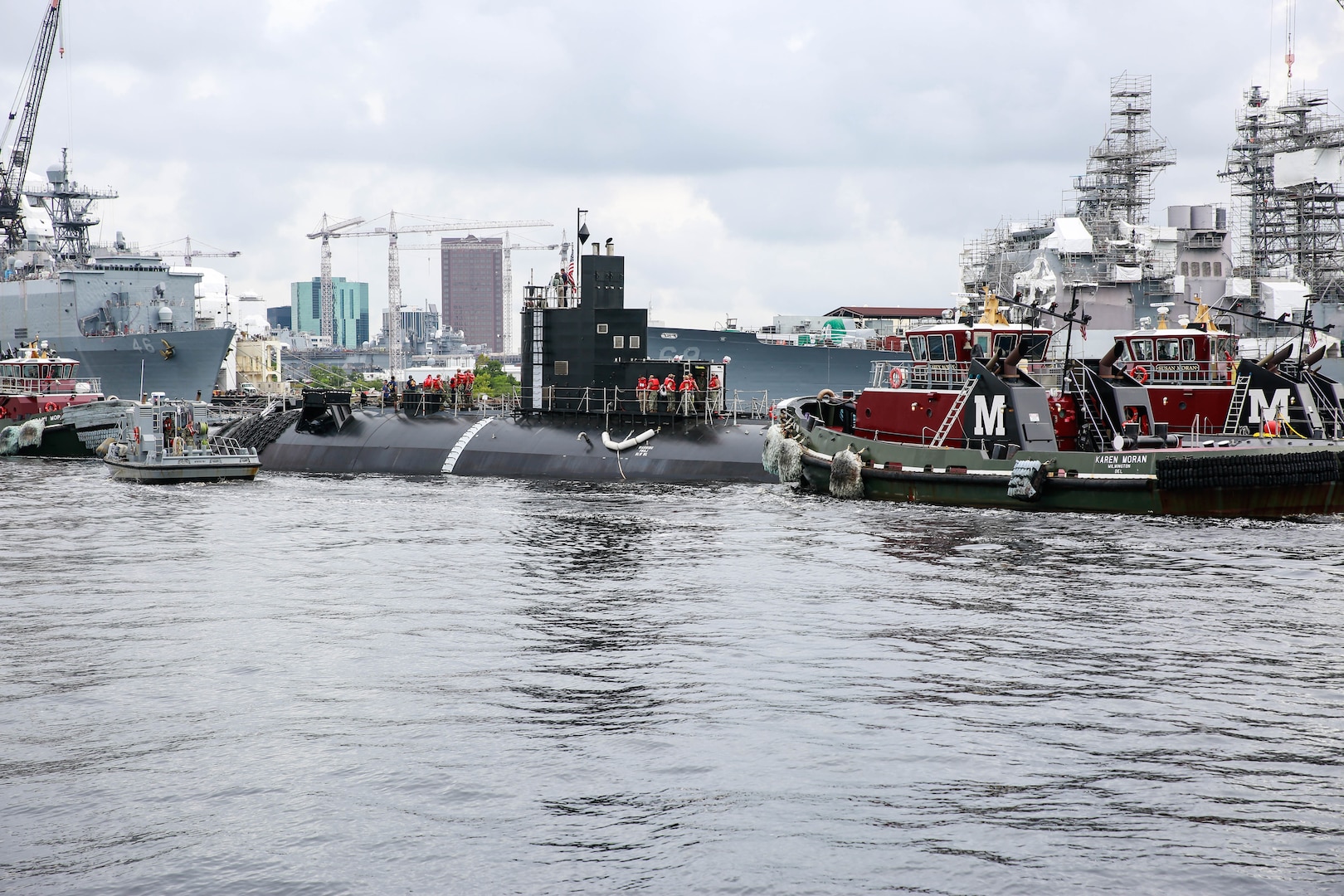[ad_1]
Following the completion of her conversion work at the Norfolk Naval Shipyard (NNSY), the future docked training ship USS San Francisco (SSN 711) was towed to Charleston, South Carolina on August 16.
San Francisco will serve as a modern training platform for sailors from the Nuclear Power Training Unit (NPTU) in Charleston, joining MTS La Jolla (MTS 701) who completed their conversion to NNSY in November 2019.
The San Francisco conversion required the separation of the hull into three sections, the removal and recycling of the central section of the hull, and the addition of three new sections. The new hull sections arrived from General Dynamics Electric Boat via a barge. NNSY chipped sections of the hull, averaging 700 tonnes, from the dock and tied them up in San Francisco.
The two moored training ship conversions were the closest NNSY to building new ships since the 1950s. Even larger than La Jolla, the San Francisco conversion marks one of the largest submarine projects of all. type in the history of the shipyard. In the midst of all the conversion work, there was also the issue of maintenance, including work typical of technical overhauls performed by NNSY on other Los Angeles-class submarines.
“It is a great recognition that our service to the fleet extends beyond active ships to include these vital training platforms to prepare the Sailors who operate our nation’s warships for decades to come. ”
“The transformation of San Francisco from an operational fast attack submarine into a docked training ship is an investment in the future of the Navy,†said San Francisco Commanding Officer Captain Daniel Caldwell. “It is remarkable to consider how many Sailors will become proficient in their Fleet Operations duties through the dedicated efforts of all who have supported San Francisco throughout all phases of planning and executing the conversion during for the past six years. ”
Throughout the conversion, the project team drew on lessons learned from La Jolla on a variety of jobs ranging from piping installation and component fitting to tank restoration. A challenge at the start of the La Jolla conversion was to equip a new empty compartment module at NNSY. As a major project improvement for San Francisco, a plan was made for a fully equipped module to be delivered to the shipyard, saving over 10,000 man-days.
Innovations supporting the project team included the implementation of a cold hull cutting process, the installation of multiple hatch covers to improve underwater access for personnel and equipment, the pre-testing diesel generators using temporary systems to speed up final testing and deployment of a new scaffolding system to improve worker safety during the vessel’s 34 months in dry dock. This scaffolding system has since become widely used at NNSY.
Once in Charleston, work on San Francisco will continue early next year when the conversion is officially complete and the ship is ready for unrestricted training.
“This project has certainly been a marathon rather than a sprint, but the project team has maintained their stamina as we approach the finish line,†said project superintendent Charles Brock. “Considering the considerable work required, it took a lot of effort and collaboration not only within each department of the shipyard, but with all nuclear capable shipyards, public and private, and all naval nuclear laboratories to have the vessel tested and prepared for towing. . We were thrilled to see the upcoming MTS 711 descend the river to complete the last of its tests and ultimately fulfill its new mission. ”
Last month, the shipyard successfully completed a tilt experiment for San Francisco, a test performed when significant naval architectural changes are made to ships. After being removed from the jetty, test data determined the lightship’s weight and center of gravity, both critical to stability characteristics and ensuring safe towing to Charleston.
San Francisco and La Jolla replace the old ex-Sam Rayburn (MTS 635) and ex-Daniel Webster (MTS 626) submarines, originally commissioned in 1964 and used as training platforms for the past three decades .
NNSY will complete their two inactivations, with Rayburn being the first in line after arriving at the shipyard in April 2021.
[ad_2]

